- Clone
- QA17A17 (See other available formats)
- Regulatory Status
- RUO
- Other Names
- PARP1, Poly (ADP-ribose) polymerase, PPOL, ARTD1, ADPRT, EC 2.4.2, ADP-Ribosyltransferase (NAD+;Poly (ADP-Ribose) Polymerase), Poly (ADP-Ribose) Polymerase Family, Member 1, DNA ADP-Ribosyltransferase PARP1, Poly[ADP-Ribose] Synthase 1
- Isotype
- Mouse IgG1, κ
- Ave. Rating
- Submit a Review
- Product Citations
- publications
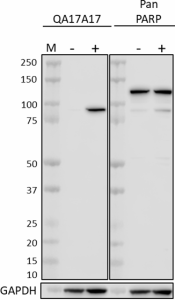
-

Whole cell extracts (15 μg protein) from HeLa cells untreated (-) or treated (+) with 1 μM staurosporine for 3 hours were resolved by 4-12% Bis-Tris gel electrophoresis, transferred to a PVDF membrane, and probed with 1 μg/mL (1:500 dilution) of Purified anti-Cleaved PARP (Asp214) Recombinant Antibody, clone QA17A17, overnight at 4°C. Proteins were visualized by chemiluminescence detection using HRP Goat anti-mouse IgG antibody (Cat. No. 405306) at a 1:3000 dilution. Direct-Blot™ HRP anti-GAPDH antibody (Cat. No. 607904) was used as a loading control at a 1:50000 dilution (lower). Lane M: molecular weight marker. -

HeLa cells untreated (A) or treated (B) with 1 μM staurosporine for 3 hours were fixed with 4% paraformaldehyde for 10 minutes, permeabilized with methanol for 10 minutes and blocked with 5% FBS for 30 minutes. Untreated (A) and treated (B) cells were then intracellularly stained with a 1:500 dilution (1.0 μg/mL) of Purified anti-Cleaved PARP (Asp214) Recombinant Antibody, clone QA17A17, overnight at 4°C, followed by incubation with Alexa Fluor® 594 goat anti-mouse IgG (Cat. No. 405326) at 1:200 dilution. Nuclei were counterstained with DAPI and the image was captured with 60x objective. -

Human T leukemia cell line Jurkat treated (filled histogram) or non-treated (open histogram) with anti-human CD95 (clone EOS9.1) (Cat. No. 305704) overnight, fixed with Fixation Buffer (Cat. No. 420801), permeabilized with True-Phos™ Perm Buffer (Cat. No. 425401), then stained with Purified anti-Cleaved PARP (Asp214) Recombinant Antibody (clone QA17A17), followed by anti-mouse IgG1 PE. -

Human T leukemia cell line Jurkat treated (Right) or non-treated (Left) with Purified anti-human CD95 (clone EOS9.1) (Cat. No. 305704) overnight, stained with Zombie Violet™ (Cat. No. 423114) for 15 minutes, fixed with Fixation Buffer (Cat. No. 420801), permeabilized with True-Phos™ Perm Buffer (Cat. No. 425401), then stained with Purified anti-Cleaved PARP (Asp214) Recombinant Antibody, clone QA17A17, followed by anti-mouse IgG1 PE.
| Cat # | Size | Price | Save |
|---|---|---|---|
| 669901 | 25 µg | ¥22,220 | |
| 669902 | 100 µg | ¥55,660 |
PARP (ADP-Ribose) Polymerase (PARP) is a 113 kD nuclear protein important for mediating the normal cellular response to DNA damage and repair in response to environmental stress. PARP catalyzes the transfer of ADP-ribose units from NAD⁺ to various nuclear proteins, including topoisomerases, histones, and PARP itself, by poly(ADP-ribosyl)ation. Following DNA damage, this protein is cleaved by ICE-like caspases, such as caspase-3 and -7. In humans, this PARP cleavage occurs between Asp214 and Gly215, yielding an 89 kD (from the carboxy-terminal catalytic domain) and a 24 kD fragment (from the amino-terminal DNA binding domain). PARP is an important regulator of cellular differentiation, proliferation, and tumor transformation, and PARP cleavage is considered a classical characteristic of cells undergoing apoptosis. Additionally, this enzyme may be the site of mutation in Fanconi anemia, and may contribute to the pathophysiology of type I diabetes.
Product DetailsProduct Details
- Verified Reactivity
- Human
- Antibody Type
- Recombinant
- Host Species
- Mouse
- Immunogen
- Proprietary synthetic peptide
- Formulation
- Phosphate-buffered solution, pH 7.2, containing 0.09% sodium azide.
- Preparation
- The antibody was purified by affinity chromatography.
- Concentration
- 0.5 mg/ml
- Storage & Handling
- The antibody solution should be stored undiluted between 2°C and 8°C.
- Application
-
WB - Quality tested
ICC, ICFC - Verified - Recommended Usage
-
Each lot of this antibody is quality control tested by Western blotting. For Western blotting, the suggested use of this reagent is 0.1 - 1.0 µg per ml. For immunocytochemistry, a concentration of 1.0 μg/ml is recommended. For intracellular flow cytometry using our True-Phos™ Perm Buffer in Cell Suspensions Protocol, the suggested use of this reagent is ≤ 0.25 µg per million cells in 100 µl volume. It is recommended that the reagent be titrated for optimal performance for each application.
- Application Notes
-
The QA17A17 antibody reacts with the 89 kD (cleaved at Asp214) fragment of human PARP1. It does not react with full-length PARP1.
Fixation and permeabilization using the True-Nuclear Buffer Set and Intracellular Staining Permeabilization Wash Buffer (10X) have also been confirmed to work in addition to the True-Phos™ Perm Buffer during in-house testing and development to detect cleaved PARP (Asp214). - Additional Product Notes
-
Clone QA17A17 was tested for ICC using PFA-fixed cells permeabilized with either methanol or Triton X-100. Both methods facilitated strong staining.
- RRID
-
AB_2814516 (BioLegend Cat. No. 669901)
AB_2814516 (BioLegend Cat. No. 669902)
Antigen Details
- Structure
- The large fragment of cleaved PARP is an 801 amino acid product with a predicted molecular weight of 89 kD
- Distribution
-
Nuclear
- Function
- Molecular “nick sensor”; base excision repair; catalyzes poly(ADP-ribosyl)ation of acceptor proteins involved in chromatin architecture; DNA metabolism; protein modification may enhance or repress transcription
- Interaction
- Component of a base excision repair complex containing at least XRCC1, PARP2, POLB and LIG3. Heterodimerizes with PARP2, interacts with PARP3, modified TATA-BP, YY1, Sp1, NF-B, p53 and others
- Biology Area
- Apoptosis/Tumor Suppressors/Cell Death, Cell Biology, DNA Repair/Replication, Transcription Factors
- Molecular Family
- Nuclear Markers
- Antigen References
- Gene ID
- 142 View all products for this Gene ID
- UniProt
- View information about Cleaved PARP on UniProt.org
Related FAQs
Other Formats
View All Cleaved PARP Reagents Request Custom Conjugation| Description | Clone | Applications |
|---|---|---|
| PE anti-Cleaved PARP (Asp214) Recombinant Antibody | QA17A17 | ICFC |
| Purified anti-Cleaved PARP (Asp214) Recombinant Antibody | QA17A17 | WB,ICC,ICFC |
| PerCP/Cyanine5.5 anti-Cleaved PARP (Asp214) Recombinant Antibody | QA17A17 | ICFC |
| APC anti-Cleaved PARP (Asp214) Recombinant Antibody | QA17A17 | ICFC |
| PE/Cyanine7 anti-Cleaved PARP (Asp214) Recombinant Antibody | QA17A17 | ICFC |
Customers Also Purchased

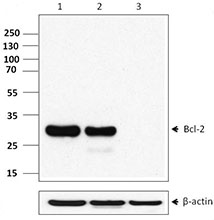
Compare Data Across All Formats
This data display is provided for general comparisons between formats.
Your actual data may vary due to variations in samples, target cells, instruments and their settings, staining conditions, and other factors.
If you need assistance with selecting the best format contact our expert technical support team.
-
PE anti-Cleaved PARP (Asp214) Recombinant Antibody
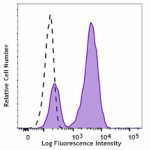
Human T leukemia cell line Jurkat treated (filled histogram)... 
Human T leukemia cell line Jurkat treated (right) or non-tre... -
Purified anti-Cleaved PARP (Asp214) Recombinant Antibody

Whole cell extracts (15 μg protein) from HeLa cells untreate... 
HeLa cells untreated (A) or treated (B) with 1 μM staurospor... 
Human T leukemia cell line Jurkat treated (filled histogram)... 
Human T leukemia cell line Jurkat treated (Right) or non-tre... -
PerCP/Cyanine5.5 anti-Cleaved PARP (Asp214) Recombinant Antibody
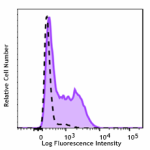
Human T leukemia cell line Jurkat treated (filled histogram)... 
Human T leukemia cell line Jurkat treated (right) or non-tre... -
APC anti-Cleaved PARP (Asp214) Recombinant Antibody
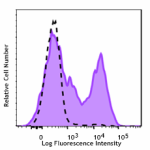
Human T leukemia cell line Jurkat treated (filled histogram)... 
Human T leukemia cell line Jurkat treated (right) or non-tre... -
PE/Cyanine7 anti-Cleaved PARP (Asp214) Recombinant Antibody

Human T leukemia cell line Jurkat treated (right) or non-tre... 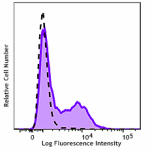
Human T leukemia cell line Jurkat treated (filled histogram)...





_Antibody_1_WB_062116.jpg)




Follow Us